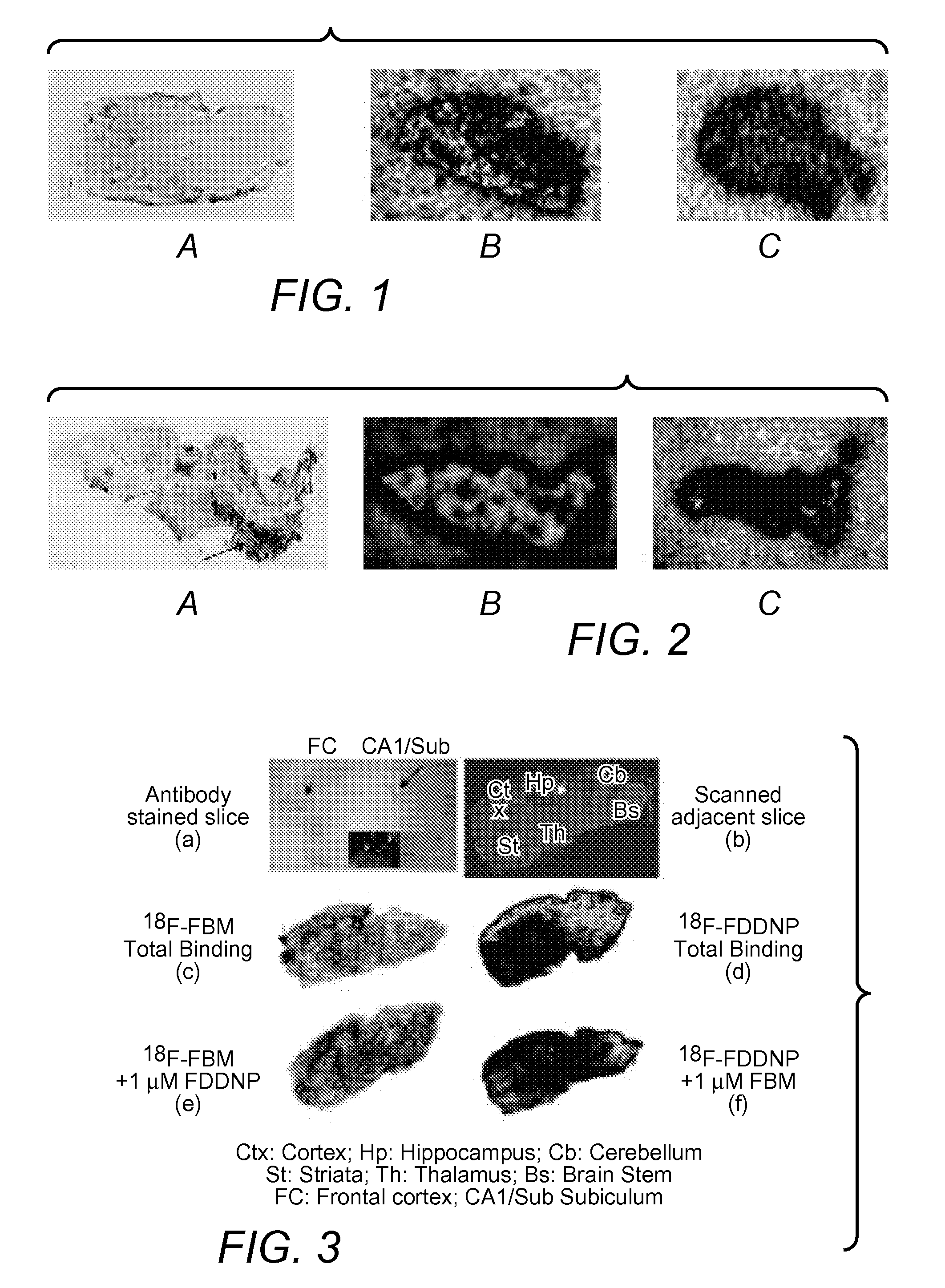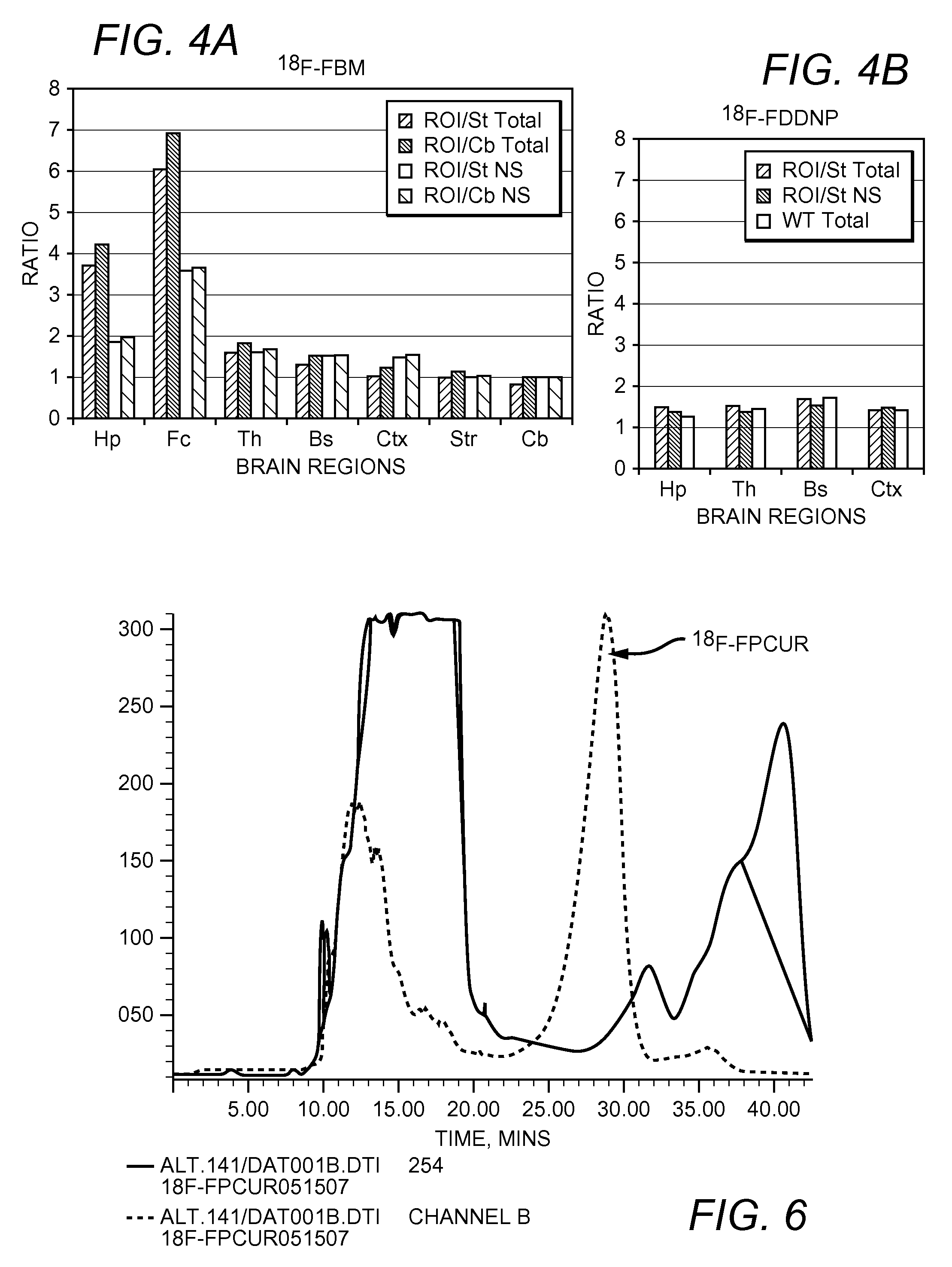Beta-amyloid and neurofibrillary tangle imaging agents
- Summary
- Abstract
- Description
- Claims
- Application Information
AI Technical Summary
Benefits of technology
Problems solved by technology
Method used
Image
Examples
Embodiment Construction
[0028]The inventors have discovered various imaging agents that can be used to detect amyloid plaques and neurofibrillary tangles in the brain. Among other advantages, contemplated imaging agents exhibit relatively high specificity with respect to the labeling target and have significantly improved solubility in aqueous systems (and with that reduced non-specific binding to lipophilic non-target tissue and structures). Among other compounds, the inventors have synthesized 18F-FBM (4′-[(2-[18F]fluoroethyl)(methyl)amino]-4-phenyl-3-buten-2-malonitrile) and 18F-FPCUR (18F-fluoropropylcurcumin) and preformed in vitro studies on Tg2576 and triple transgenic mice brains. In these studies, compounds according to the inventive subject matter were less lipophilic and showed significant and specific binding to plaques in the hippocampus. Thus, and among various other uses, contemplated compounds and compositions can be employed for early diagnosis or even therapy of Alzheimer's and various ot...
PUM
| Property | Measurement | Unit |
|---|---|---|
| Electric charge | aaaaa | aaaaa |
| Capacitance | aaaaa | aaaaa |
| Capacitance | aaaaa | aaaaa |
Abstract
Description
Claims
Application Information
 Login to View More
Login to View More - R&D
- Intellectual Property
- Life Sciences
- Materials
- Tech Scout
- Unparalleled Data Quality
- Higher Quality Content
- 60% Fewer Hallucinations
Browse by: Latest US Patents, China's latest patents, Technical Efficacy Thesaurus, Application Domain, Technology Topic, Popular Technical Reports.
© 2025 PatSnap. All rights reserved.Legal|Privacy policy|Modern Slavery Act Transparency Statement|Sitemap|About US| Contact US: help@patsnap.com



